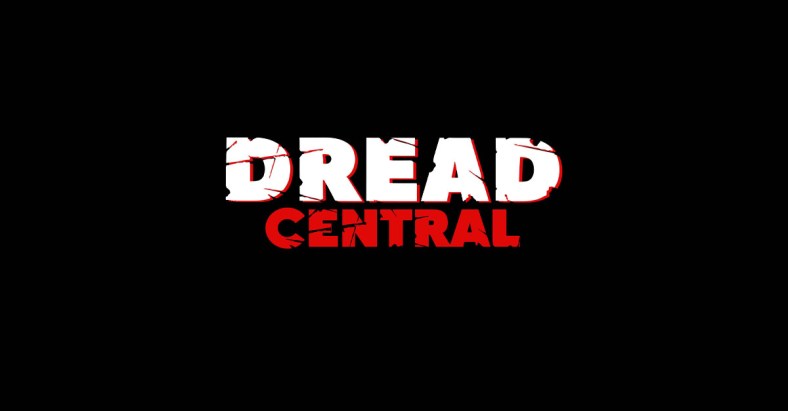Revisiting THE LOST WORLD: JURASSIC PARK

Not even Camilla Belle is safe in Steven Speilberg’s The Lost World: Jurassic Park. The young child is savagely attacked by a group of Compsognathus shortly after she and her Yacht-rock family dock on the coast of Isla Sorna, Michael Crichton’s sequel-induced second island. A Park redux, The Lost World stars a returning Dr. Ian Malcolm (Jeff Goldblum). Like the central troupe in the first, he’s unwittingly compelled to travel to a dinosaur-infested island. There, nature runs amok and no one, not even Malcolm’s paleontologist girlfriend, Dr. Sarah Harding (Julianne Moore) is safe.
Related Article: Elon Musk Could Create Real JURASSIC PARK Right Now
Following the unprecedented success of 1993’s Jurassic Park, talk of a sequel began almost immediately. Crichton concluded the novel in 1995. Devising the idea of a second island of cloned dinosaurs. Production of the film adaptation began immediately, with Spielberg returning at the helm, aiming for a spring 1997 release. The Lost World: Jurassic Park premiered in Los Angeles on May 19, 1997. Universal released it wide four days later. A bonafide, fanged success, The Lost World proved that this series of dino shockers had both teeth and legs. And an entire franchise was born (or, depending on who you ask, cloned).
The digital and practical reanimation of dinosaurs in Jurassic Park was contemporary Spielberg unearthing his early genre roots. And with the backing of large studios and spellbinding special effects. No different than his seminal Jaws, Spielberg made use of a popular literary work to elucidate upon our collective relationship with our planet and the beings that inhabit it. Our enduring desire to pervert and transform that natural into something almost supernatural. It is a series about control and hubris. A congenital desire to mold the natural world into something synthetic and transactional– a commodity. Innate wonder and awe and counterfeited with dubious science and remunerative returns.
The resultant terror, of course, speaks to the paradoxical nature of the series’ core conflict; in trying to control the natural world, all control is lost. Limbs are torn off, cities are destroyed, and young children, inexplicably placed in the middle of exceptionally dangerous scenarios, are (likely) irreparably traumatized. Though weaker than the first, The Lost World nonetheless charges on with the core themes intact; a simultaneously awe-inspiring and terrifying return to a time when dinosaurs roamed the earth.
Related Article: Bite Into This New Trailer for JURASSIC WORLD: CAMP CRETACEOUS 3
The Lost World further showcases some of the series’ most frightening genre iconography– horror is in its DNA. The apotheosis of which, of course, is the protracted and unbearably tense early set-piece where two Tyrannosaurus rexes, eager to rescue their infant, throw the InGen research trailer over the cliffside. Bound only by a cable link, Sarah, Ian, and Nick (a very nineties Vince Vaughn) are moments away from plummeting to their deaths. Cracked glass and camera bags have never been so terrifying.
Blood cascades down nocturnal waterfalls and helpless field techs are graphically, gorgeously torn in two. There are nail-biting treks through raptor-infested fields. And arrestingly staged close calls with some of the most athletic raptors this side of the Cretaceous period. The terror, though, is native. Like the cloned dinosaurs themselves, to Isla Sorna. Restricted to the same contempo-tech naturalism of Spielberg’s original, the early half of The Lost World is, as sequels are wont to do, is principally Jurassic Park on a larger, greener, and meaner scale.
The bold blockbuster shift occurs as The Lost World shifts (or unceremoniously crashes) into metropolitan mayhem. With both a male Tyrannosaurus and the infant en route to San Diego, the freighter carrying the dinosaurs crashes into the docks. The adult Rex kills the crew and unleashes a 1986-esque 8-bit rampage throughout the city. It flips and throws cars, busses careen into video rental stores, and 76 station balls. Most horrifically, the adult Rex makes quick work of a family dog.
Also Read: Ranking Every SAW Movie Worst to Best (Including SPIRAL)
Ian and Sarah successfully sedate the adult at the end. Thus putting to an end InGen’s effort to model prehistory on an unprecedented, domestic scale (at least, that is, until the World franchise). It’s all rather dramatic. Like Jurassic Park with camp. But the technicality and sheer audacity are unmatched. No one does Spielberg quite like Spielberg. And even as the film drags– especially with the exposition-heavy front-end– there’s vibrancy and animation. Not simply in the characterization of the central dinos. But in the scenery, the casting, and the diversions from formulaic blockbuster templates.
The series’ trademark brutality remains intact, an epoxy gruesomeness that has defined later entries. The DNA of Pteranodon deaths and severed arms in the World films are seen here. The genetic models of which include bisected bodies and bloodied corpses in the streets. It’s all quite wonderful, the filmic equivalent of John Hammond always had in mind. Indeed, though the series has evolved far beyond the original prototype, the structural integrity remains the same. It is a series about nature versus man, science versus faith. And playing God in a sandbox too vast and complicated to truly understand. It is sensational, silly, scary, and a whole lotta fun. Dinosaurs freaking rule, and in 1997, they loomed gloriously, gorgeously large.

Categorized:Editorials News

